-
 Bitcoin
Bitcoin $108,708.8110
0.60% -
 Ethereum
Ethereum $2,561.6057
1.91% -
 Tether USDt
Tether USDt $1.0001
-0.03% -
 XRP
XRP $2.2795
0.57% -
 BNB
BNB $662.2393
1.00% -
 Solana
Solana $153.1346
3.74% -
 USDC
USDC $1.0000
0.00% -
 TRON
TRON $0.2877
0.97% -
 Dogecoin
Dogecoin $0.1710
3.93% -
 Cardano
Cardano $0.5871
1.61% -
 Hyperliquid
Hyperliquid $39.6663
1.68% -
 Sui
Sui $2.9032
0.79% -
 Bitcoin Cash
Bitcoin Cash $496.1879
1.71% -
 Chainlink
Chainlink $13.5807
3.01% -
 UNUS SED LEO
UNUS SED LEO $9.0777
0.61% -
 Stellar
Stellar $0.2514
4.51% -
 Avalanche
Avalanche $18.1761
1.86% -
 Shiba Inu
Shiba Inu $0.0...01173
1.72% -
 Toncoin
Toncoin $2.8010
-4.23% -
 Hedera
Hedera $0.1594
3.21% -
 Litecoin
Litecoin $87.0257
-0.53% -
 Monero
Monero $319.1217
1.79% -
 Polkadot
Polkadot $3.3853
0.68% -
 Dai
Dai $0.9999
-0.01% -
 Ethena USDe
Ethena USDe $1.0003
0.02% -
 Bitget Token
Bitget Token $4.3420
-0.97% -
 Uniswap
Uniswap $7.3772
1.39% -
 Aave
Aave $286.6277
5.61% -
 Pepe
Pepe $0.0...09994
2.33% -
 Pi
Pi $0.4589
1.76%
What is the transfer fee of USDT?
USDT transfer fees vary greatly depending on the network (e.g., Ethereum, TRON, Omni), with additional fees from exchanges and wallets. Network congestion and transaction speed also impact the final cost.
Mar 23, 2025 at 02:14 am
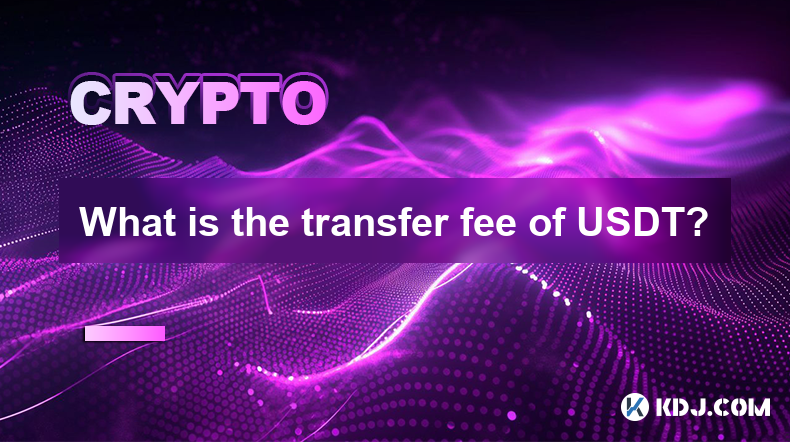
Key Points:
- USDT transfer fees vary significantly depending on the network used (e.g., Ethereum, TRON, Omni).
- Fees are typically denominated in the native cryptocurrency of the chosen network (e.g., ETH, TRX, BTC).
- Several factors influence the exact fee, including network congestion and the chosen transaction speed.
- Exchanges and wallets often add their own fees on top of the network fees.
- Understanding these fee structures is crucial for cost-effective USDT transfers.
What is the transfer fee of USDT?
The cost of transferring Tether (USDT) isn't a fixed amount. It fluctuates based on several crucial factors, primarily the blockchain network used for the transaction. USDT exists on multiple blockchains, each with its own fee structure. The most common networks include Ethereum (ERC-20), TRON (TRC-20), and Omni (on Bitcoin). Each network has different transaction costs and speeds.
Network Fees:
- Ethereum (ERC-20): Ethereum's gas fees, which are paid in ETH, are notorious for their volatility. High network activity leads to significantly higher gas fees. This means transferring USDT via ERC-20 can be expensive, especially during periods of intense network congestion. The fee is dynamic and changes constantly.
- TRON (TRC-20): TRON generally offers much lower transaction fees compared to Ethereum. Fees are paid in TRX, and they tend to be significantly more stable and predictable than Ethereum's gas fees. This makes TRC-20 USDT transfers a more budget-friendly option.
- Omni (on Bitcoin): USDT on the Omni Layer uses the Bitcoin blockchain. Fees are paid in Bitcoin (BTC) and are typically moderate, falling somewhere between TRON and Ethereum in terms of cost. However, Bitcoin transaction confirmation times can be slower than TRON or even Ethereum, depending on network conditions.
Factors Affecting USDT Transfer Fees:
Beyond the base network fees, several additional factors can influence the final cost:
- Network Congestion: High network traffic increases demand for block space, driving up transaction fees across all networks. This is particularly true for Ethereum.
- Transaction Speed: Users can often choose a faster transaction speed, which typically results in higher fees. Slower transactions usually mean lower fees. This is a common trade-off across all networks.
- Exchange/Wallet Fees: Many cryptocurrency exchanges and wallets add their own fees on top of the network fees. These fees can vary widely depending on the platform. Always check the fee structure before initiating a transfer.
- Transaction Size: While less significant for USDT transfers than for some other cryptocurrencies, exceptionally large transactions might incur slightly higher fees.
Step-by-Step Guide to Understanding USDT Transfer Fees (Illustrative Example):
Let's say you're transferring USDT from one exchange to another.
- Step 1: Choose your network: Decide whether to use ERC-20, TRC-20, or Omni. Consider the fee structure and transaction speed of each.
- Step 2: Check the exchange's fee structure: Before initiating the transfer, check your sending and receiving exchange's fee schedules. They might charge a percentage-based fee or a flat fee.
- Step 3: Observe current network fees: Many exchanges and wallets display estimated network fees before you confirm the transaction. Pay close attention to these estimates.
- Step 4: Confirm the transaction: Once you've reviewed all fees, confirm the transfer. The actual fee might vary slightly from the estimate due to fluctuating network conditions.
Common Questions:
Q: Which network is cheapest for USDT transfers?
A: Generally, TRON (TRC-20) offers the lowest transaction fees. However, this can vary depending on network congestion at the time of the transaction.
Q: Are there any hidden fees when transferring USDT?
A: While the network fees are usually transparent, exchanges and wallets may add their own fees. Always check the fee structure before transferring.
Q: How can I minimize USDT transfer fees?
A: Choose the TRC-20 network when possible, transfer during periods of low network congestion, and select slower transaction speeds (if available) to reduce fees.
Q: What happens if I don't have enough cryptocurrency to cover the network fees?
A: Your transaction will fail. Ensure you have sufficient funds in your chosen network's cryptocurrency (ETH, TRX, or BTC) to cover both the network fees and any potential exchange/wallet fees.
Q: Can I predict the exact USDT transfer fee beforehand?
A: No, the exact fee is difficult to predict with complete accuracy due to the dynamic nature of network fees. However, estimates are usually provided before you confirm the transaction.
Disclaimer:info@kdj.com
The information provided is not trading advice. kdj.com does not assume any responsibility for any investments made based on the information provided in this article. Cryptocurrencies are highly volatile and it is highly recommended that you invest with caution after thorough research!
If you believe that the content used on this website infringes your copyright, please contact us immediately (info@kdj.com) and we will delete it promptly.
- Ozak AI Presale: The AI Token Race to $1 and Beyond
- 2025-07-08 00:30:13
- Solana, Memecoins, and BONKbot: Riding the Wave of Telegram Trading
- 2025-07-08 01:10:13
- Bitcoin Miners, AI Wars, and the US Learning Curve: A New York State of Mind
- 2025-07-08 00:30:13
- XRP Price, Whale Transfers, and Breakout Potential: What's Next?
- 2025-07-08 01:30:13
- Arctic Pablo: The Meme Coin Melting Crypto in 2025?
- 2025-07-08 00:50:13
- Crypto Miner's Ethereum Bet: Stock Surge or Risky Gamble?
- 2025-07-08 01:50:13
Related knowledge
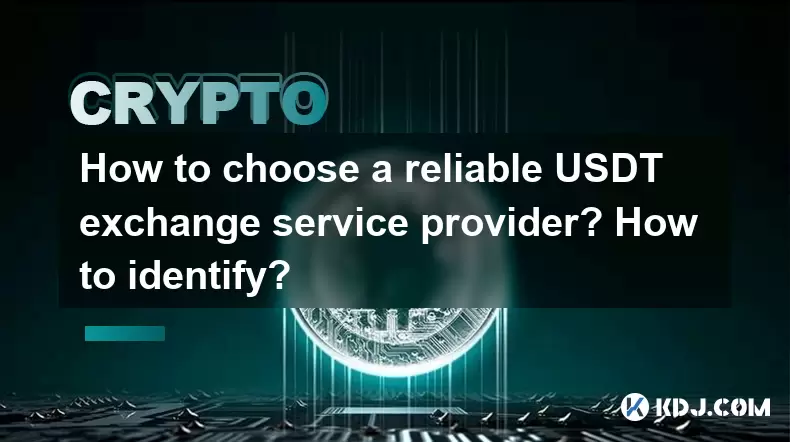
How to choose a reliable USDT exchange service provider? How to identify?
Jun 12,2025 at 03:15pm
Understanding the Role of USDT in Cryptocurrency TradingUSDT (Tether) is one of the most widely used stablecoins in the cryptocurrency market. It is designed to maintain a 1:1 peg with the U.S. dollar, offering traders and investors a way to hedge against volatility while remaining within the crypto ecosystem. Choosing a reliable USDT exchange service p...
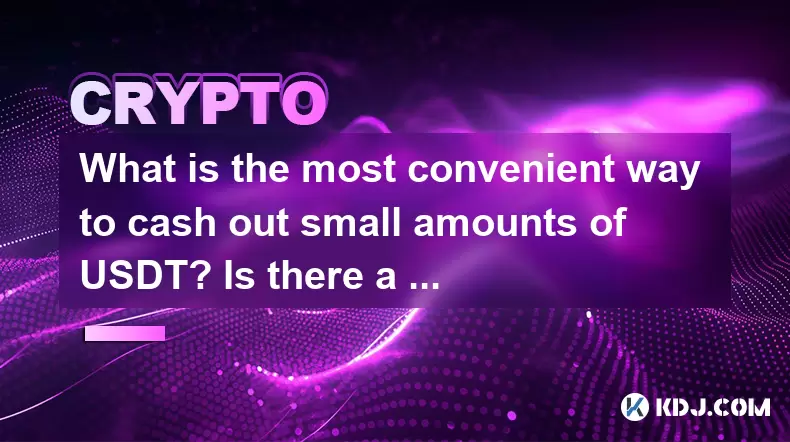
What is the most convenient way to cash out small amounts of USDT? Is there a shortcut?
Jun 11,2025 at 11:00pm
Understanding the Need to Cash Out Small USDT AmountsCashing out small amounts of USDT can be a challenge for many crypto users. Traditional methods often involve high fees, minimum withdrawal limits, or cumbersome verification processes that make it inefficient for small transactions. The key is to find a method that balances speed, cost, and convenien...
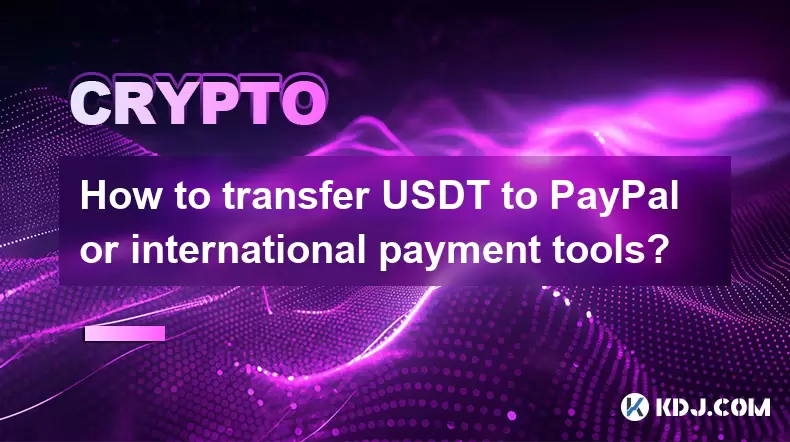
How to transfer USDT to PayPal or international payment tools?
Jun 15,2025 at 05:28am
Understanding the Basics of USDT and PayPal IntegrationUSDT (Tether) is a stablecoin pegged to the US dollar, offering blockchain-based value transfer with minimal volatility. PayPal, on the other hand, is a centralized digital wallet that facilitates fiat currency transactions globally. Direct integration between USDT and PayPal does not exist due to t...
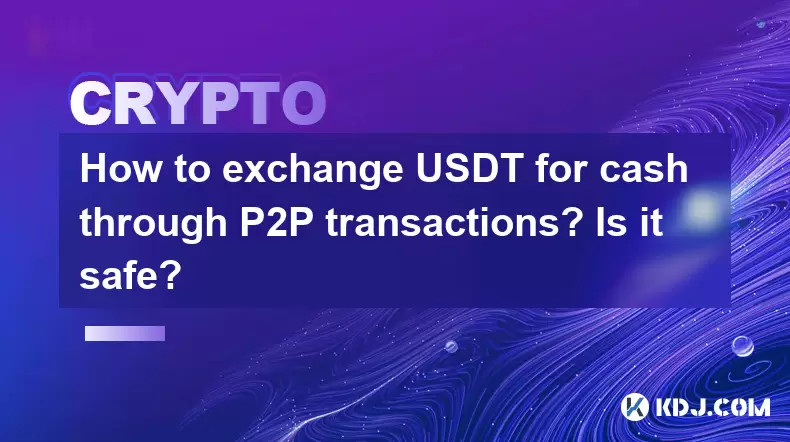
How to exchange USDT for cash through P2P transactions? Is it safe?
Jun 18,2025 at 07:56am
Understanding USDT and P2P TransactionsTether (USDT) is a stablecoin pegged to the value of the US dollar, making it a popular choice for users who want to avoid the volatility of other cryptocurrencies while still participating in the crypto ecosystem. Peer-to-peer (P2P) transactions allow individuals to trade directly with each other without going thr...
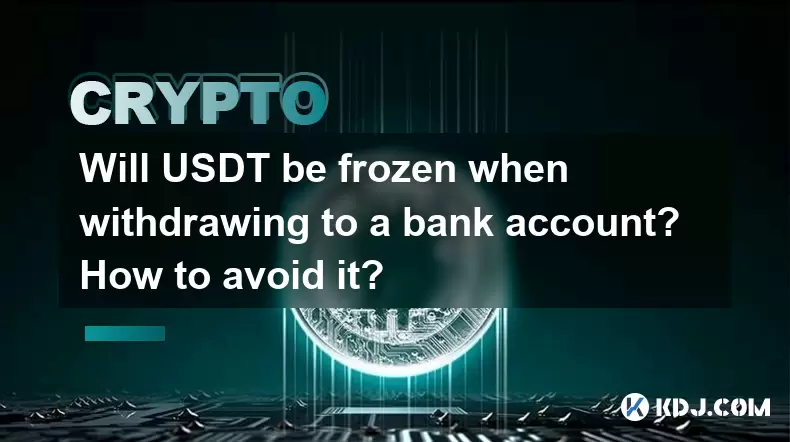
Will USDT be frozen when withdrawing to a bank account? How to avoid it?
Jun 15,2025 at 10:03am
Understanding USDT Withdrawals and Bank Account Freezing RisksWhen users decide to withdraw USDT (Tether) to a bank account, one of the most common concerns is whether their funds will be frozen during the process. This concern stems from real-life cases where individuals have encountered delays or restrictions when converting digital assets into fiat c...
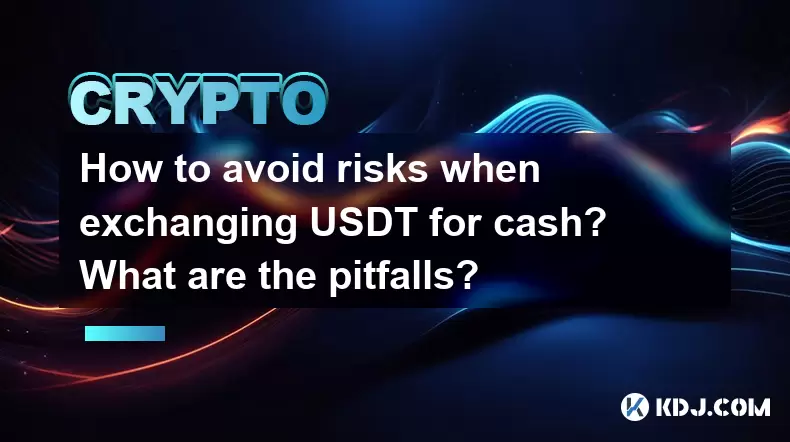
How to avoid risks when exchanging USDT for cash? What are the pitfalls?
Jun 11,2025 at 08:14pm
Understanding the Risks of Exchanging USDT for CashWhen exchanging USDT (Tether) for cash, users must be aware of the potential risks involved. As a stablecoin pegged to the US dollar, USDT is widely used in crypto transactions due to its price stability. However, converting it into fiat currency like USD or CNY can expose users to several pitfalls, inc...

How to choose a reliable USDT exchange service provider? How to identify?
Jun 12,2025 at 03:15pm
Understanding the Role of USDT in Cryptocurrency TradingUSDT (Tether) is one of the most widely used stablecoins in the cryptocurrency market. It is designed to maintain a 1:1 peg with the U.S. dollar, offering traders and investors a way to hedge against volatility while remaining within the crypto ecosystem. Choosing a reliable USDT exchange service p...

What is the most convenient way to cash out small amounts of USDT? Is there a shortcut?
Jun 11,2025 at 11:00pm
Understanding the Need to Cash Out Small USDT AmountsCashing out small amounts of USDT can be a challenge for many crypto users. Traditional methods often involve high fees, minimum withdrawal limits, or cumbersome verification processes that make it inefficient for small transactions. The key is to find a method that balances speed, cost, and convenien...

How to transfer USDT to PayPal or international payment tools?
Jun 15,2025 at 05:28am
Understanding the Basics of USDT and PayPal IntegrationUSDT (Tether) is a stablecoin pegged to the US dollar, offering blockchain-based value transfer with minimal volatility. PayPal, on the other hand, is a centralized digital wallet that facilitates fiat currency transactions globally. Direct integration between USDT and PayPal does not exist due to t...

How to exchange USDT for cash through P2P transactions? Is it safe?
Jun 18,2025 at 07:56am
Understanding USDT and P2P TransactionsTether (USDT) is a stablecoin pegged to the value of the US dollar, making it a popular choice for users who want to avoid the volatility of other cryptocurrencies while still participating in the crypto ecosystem. Peer-to-peer (P2P) transactions allow individuals to trade directly with each other without going thr...

Will USDT be frozen when withdrawing to a bank account? How to avoid it?
Jun 15,2025 at 10:03am
Understanding USDT Withdrawals and Bank Account Freezing RisksWhen users decide to withdraw USDT (Tether) to a bank account, one of the most common concerns is whether their funds will be frozen during the process. This concern stems from real-life cases where individuals have encountered delays or restrictions when converting digital assets into fiat c...

How to avoid risks when exchanging USDT for cash? What are the pitfalls?
Jun 11,2025 at 08:14pm
Understanding the Risks of Exchanging USDT for CashWhen exchanging USDT (Tether) for cash, users must be aware of the potential risks involved. As a stablecoin pegged to the US dollar, USDT is widely used in crypto transactions due to its price stability. However, converting it into fiat currency like USD or CNY can expose users to several pitfalls, inc...
See all articles

























































































